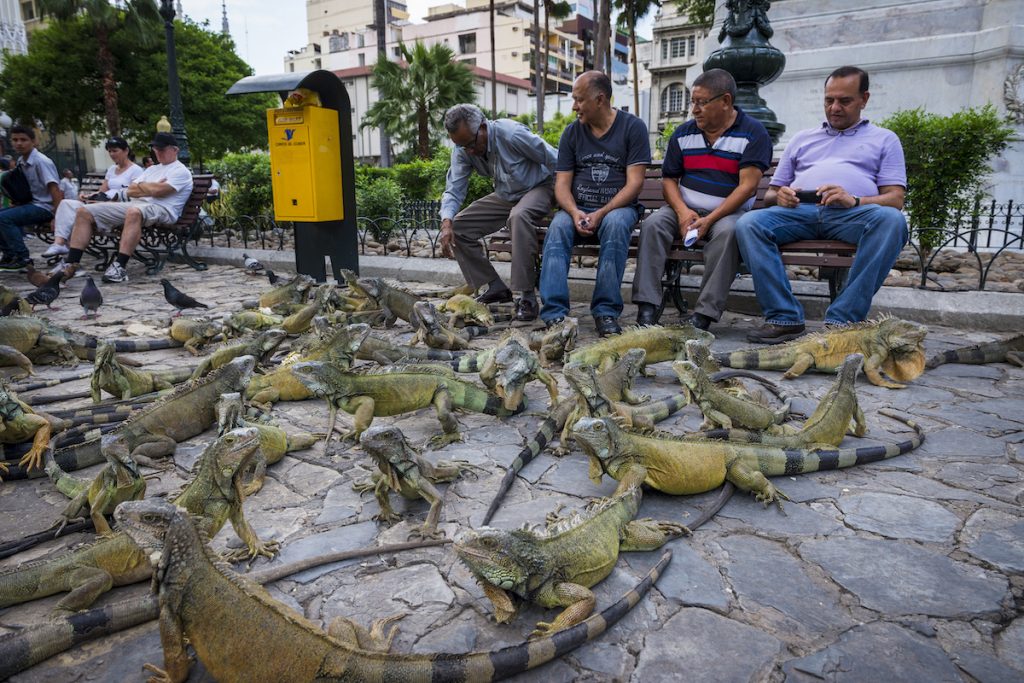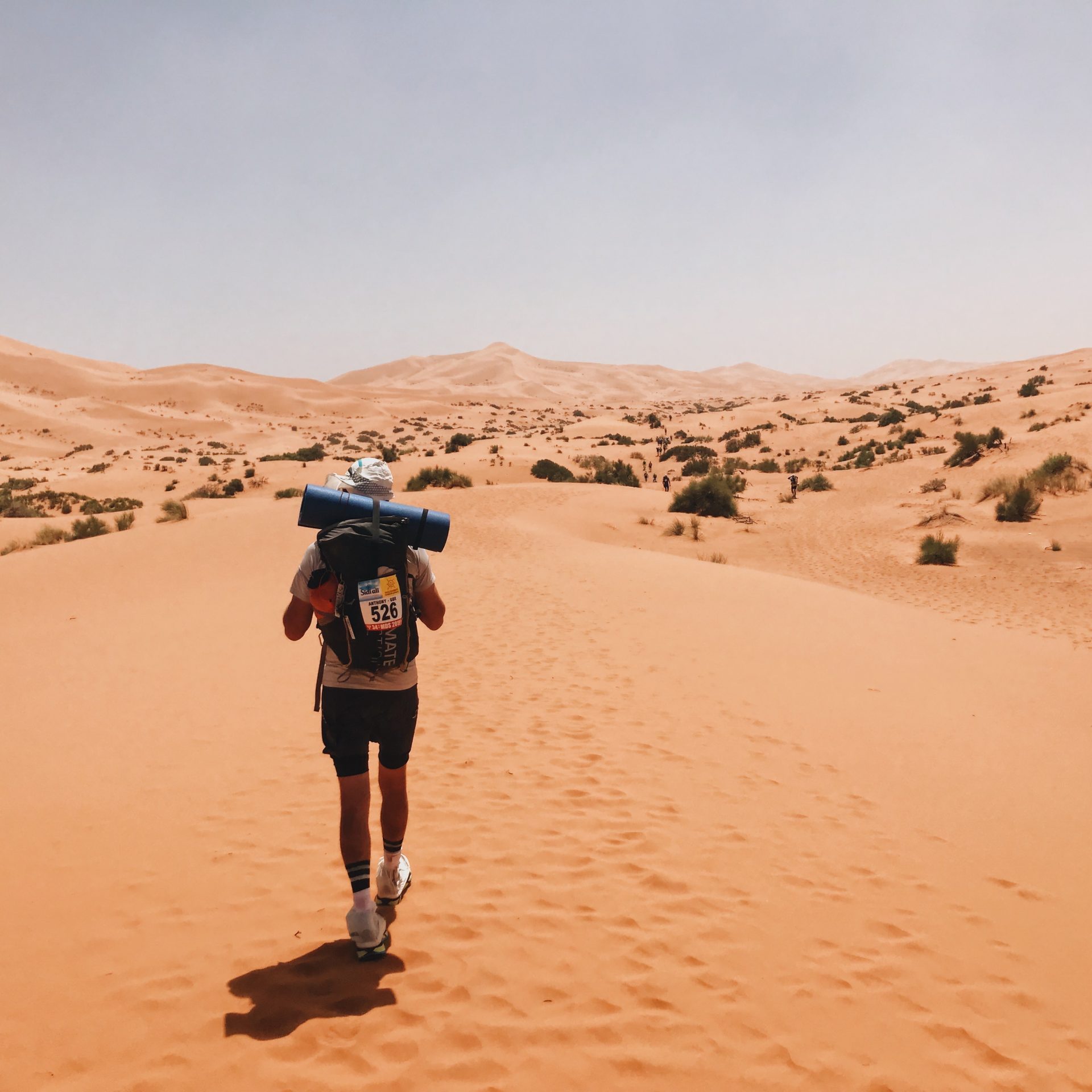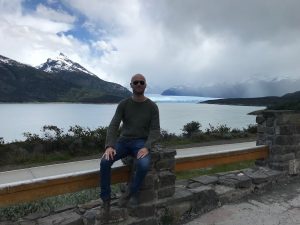Looking for things to do in Guayaquil, Ecuador?
Take a seat!
Often tossed to the side as a mere “port city,” it may not be as easy on the eye as Quito and even a little rougher around the edges, but there are enough Guayaquil activities if you’re exploring Ecuador, it’s the country’s second-largest city after all.
Already a nation that attracts some of the least foreign attention compared to the rest of the continent, Guayaquil is a relatively untravelled city, playing the bridesmaid to adventure-laden, Instagrammable Ecuadorian cities such as Baños.
Sitting on the Ecuadorian coast, Guayaquil is not only the country’s main port but also the gateway to one of Ecuador’s most famous regions, the Galápagos Islands. This, coupled with the nearby land border crossing to Peru makes Guayaquil an ideal centre for further exploration.
In this post, I’ll bring you what things you can do in Guayaquil, day trip options and also some handy tips about the city, which is a worthy addition to your South America itinerary if you’ve got time on your hands.
Is Guayaquil Worth Visiting?
Guayaquil is definitely worth a chance should you be travelling through Ecuador. I avoid saying things or places are a “must do,” (although I have my exceptions for me personally) and for what it’s worth I preferred Guayaquil to Quito.
I started this long South American road trip from Santa Marta, which had a very similar vibe to Guayaquil. albeit Guayaquil felt a lot bigger and busier. The city has a nice mixture of sea, sand and city so you can choose your day and activities based on your mood
The cool things to do in Guayaquil are very concentrated and there’s enough to keep you busy, excited and happy while exploring a lesser-explored South American city the big bonus is it’s a perfect stopover city for those of you who are lucky enough to visit Those dream destination Galapagos Islands.
Is Guayaquil Safe?
To be completely upfront and honest, you will need to have your wits about you while you’re travelling through Guayaquil. Admittedly, it may not be the ‘Raskol’ led crime scene seen while backpacking in Papua New Guinea, but Guayaquil isn’t the squeaky-clean tourist holiday destination from the back of a holiday brochure either.
This is South America, a completely different beast from travelling in Japan or enjoying a lovely meander in a nice and safe small European country.
Crime rates in the city, and the country as a whole, have improved dramatically over the last few decades. However, you need to understand that Ecuador is a poor country and opportunistic crime isn’t unheard of.
Falling foul of opportunity muggings and pickpockets is likely to be your biggest problem. So it’s worth taking precautions and making sure that your valuables are not on show and that you keep an eye on where you are going, especially after sundown.
All this being said, there’s no point in painting a picture of complete depravity and a crime-torn city with the need for Judge Dredd to keep the peace because this simply isn’t true. Being on your guard is good advice, no matter where you are going, but especially in Guayaquil.
Aside from being a victim of crime, you need to be aware of the possibility of scams when finding things to do in Guayaquil. With the influx of tourism, the opportunistic conmen of Guayaquil are known to try and take advantage of unsuspecting tourists with a number of scams.
Much like my one week in Quito experience, there are two main scams doing the rounds in Ecuador at the moment:
- Counterfeit USD. It’s all too easy to come across fake bills in Ecuador, as there are so many in circulation at the moment. Despite the government’s best efforts to get rid of them, locals will still try and pass these off to unsuspecting tourists as part of your change.
- Stained clothes. Unfortunately, criminals will go to pretty extreme lengths to get their hands on your bags. In this scam, you might find that some kind of brightly coloured substance has been squirted on your clothes. Later in the day, a “friendly” local will come up to you and offer to help clean your clothes, all while his friend is stealing your bag from beneath your feet.
Exercise caution in this city and don’t do anything that makes you feel uncomfortable. Check out my comprehensive guide on travel safety tips for men and women if you have extra concerns.
1. Climb 444 Steps in Las Penas Barrio (Cerro Santa Ana)
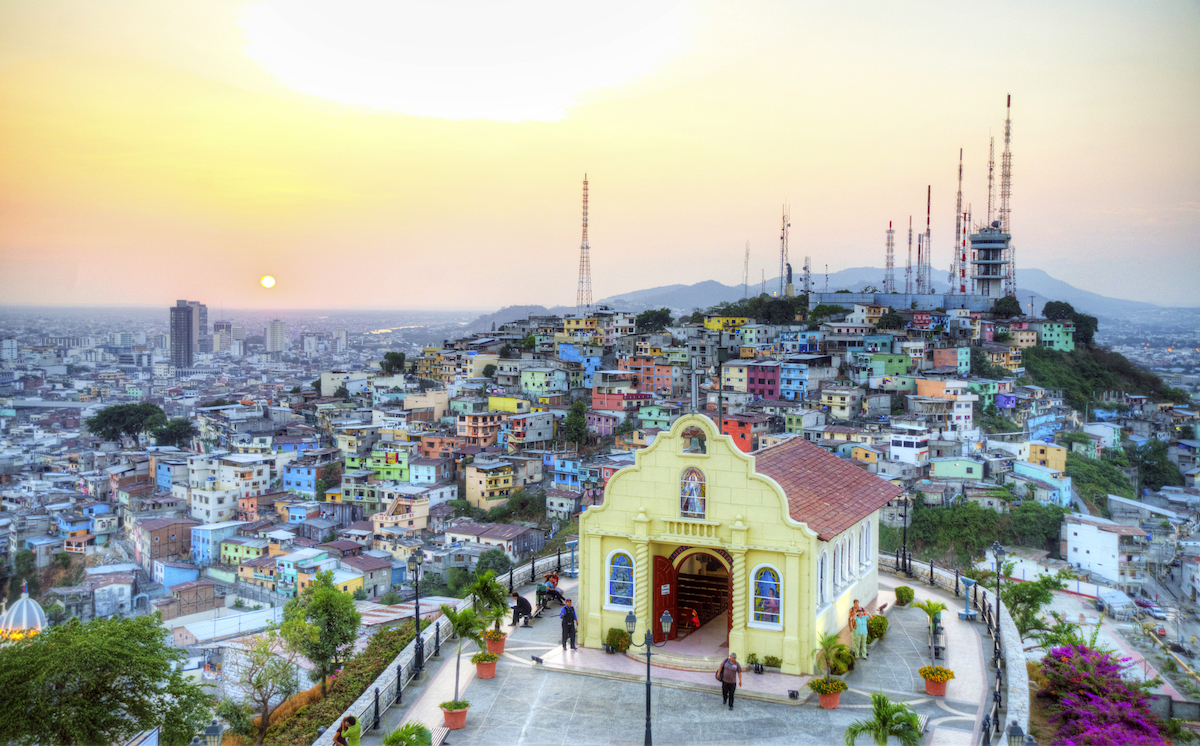
Santa Ana Hill in the centre of Guayaquil is undeniably the epicentre of the city. A combination of a naturally formed mound, a 16th-century fortification and modern development have only added to its significance.
To climb to the top of the hill, you’ll need to tackle the hundreds of concrete steps that wind their way to the top, just large enough for four people to walk abreast. Although it might take a little breath to make it to the top, the view makes it all the more worth it.
As you make your way to the summit, you’ll notice a number of restaurants, art galleries and tiny plazas peppered along the route. The brightly coloured buildings only add to the appeal of the climb, guiding you to the final peak of Cerro Santa Ana.
Once you’ve made it to the top of Santa Ana Hill, you’ll be rewarded with some of the most stunning views of the city. The surrounding rolling hills and coloured homes sprawl beneath you and seem to go on forever, a just reward for climbing nearly 500 steps to the top.
Know before you go:
- Location – At the north end of Malecón Simón Bolívar, in the very centre of the city.
- Cost – Free
- Opening hours – 24 hours.
- Time needed – Give yourself a couple of hours to make the climb and take in the views from the top.
- Getting there – Found at the centre of the city, it’s quite possible to walk to the bottom of the hill.
2. Tapas and Wine at Las Penas Barrio
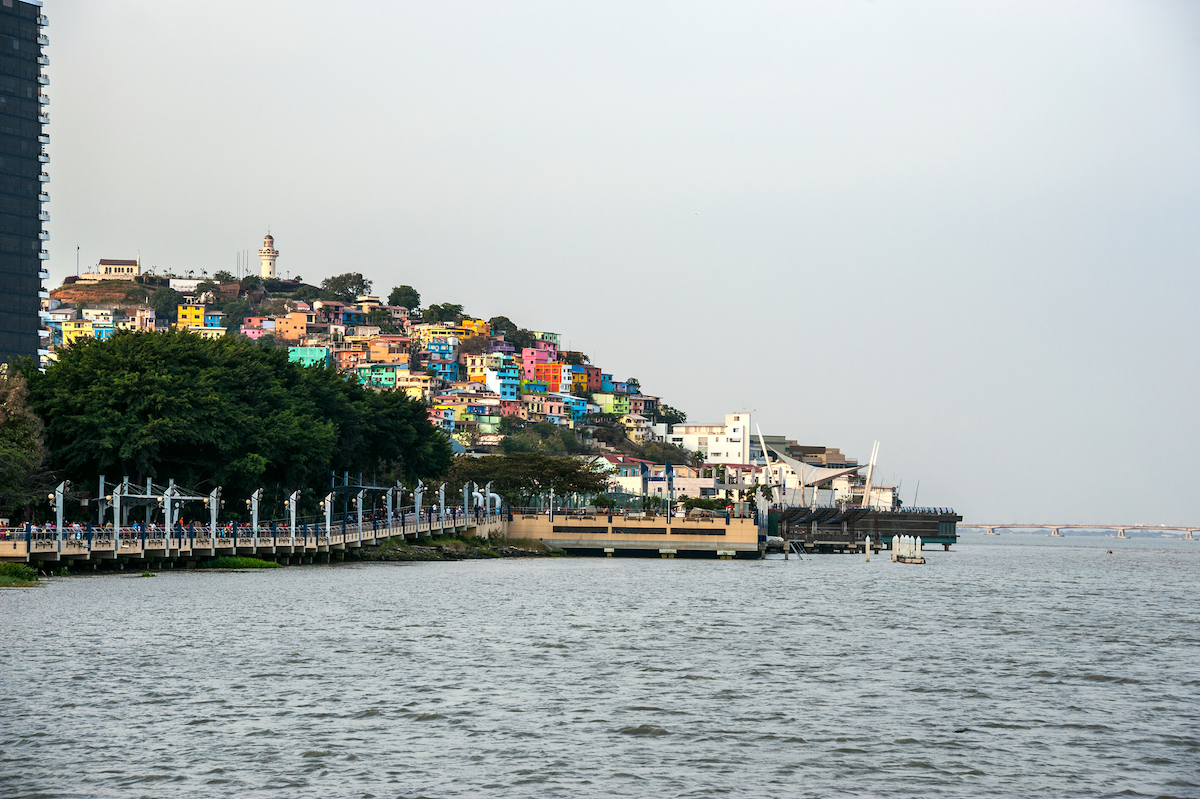
Sprawling along the banks of the Guayas River, Las Peñas is a hub of old colonial architecture and energy that the city is so famous for.
As one of the oldest regions of the city, Las Peñas has remained relatively untouched by the changes of time and was one of the few places to be affected by a city-gutting fire in the late 18th century.
Today, many of the Las Peñas neighbourhood’s buildings are painted in rich colours, only adding to the appealing aesthetic of the place.
Seeing so the neighbourhood of Las Peñas is the barrio where you will be walking through to the summit of Santa Ana Hill, once you come all the way back down you should treat yourself to some local tapas and wine at La Vinoteca restaurant.
Know before you go:
- Location – La Vinoteca is found in the Tarqui district, in the centre of Guayaquil and close to the river banks.
- Cost – Free to explore.
- Opening hours – 4:00 pm to 10:00 pm
- Time needed – Set aside an hour or so to slowly explore the neighbourhood on your way down and find this gem.
- Getting there – Taking a short taxi journey from the centre of the city is the best way of getting to Las Peñas.
3. Visit Iguana Park (Parque Seminario)
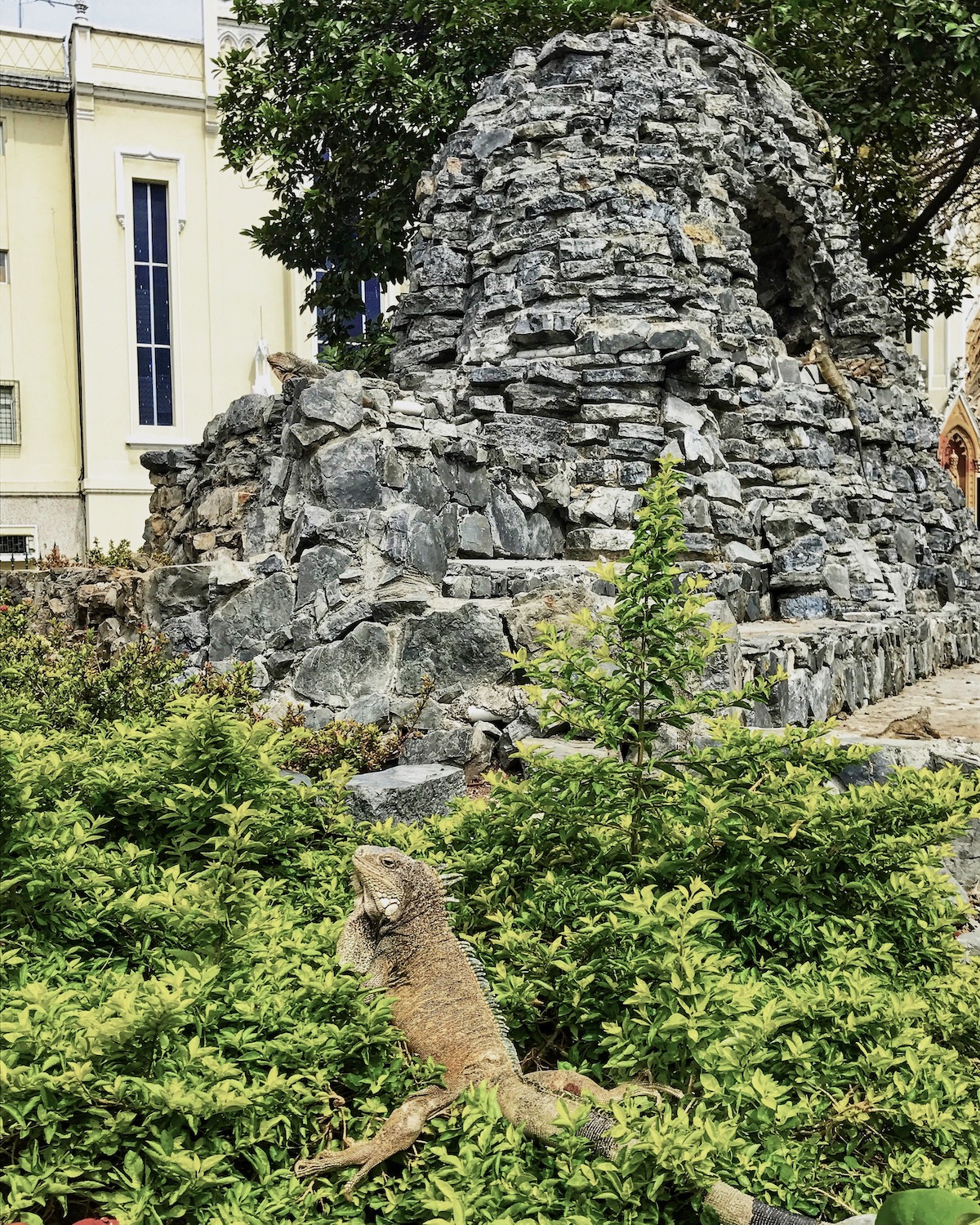
Parque Seminario, commonly known as Iguana Park, lies within the centre of Guayaquil and has long been one of the premier urban parks in the city.
Constructed in the 17th century, the park has gone through numerous refurbishments, adding architectural designs, statues and an octagon pavilion. Statues of the South American revolutionary hero Simon Bolivar can be seen in the park as well as a number of charming green gardens.
What really makes this park stand out, and give it its other name, is the huge population of iguanas that call it home. With over 350 iguanas found in the park, everywhere you turn, you will find one of these South American lizards scuttling about, sometimes nervously, often gracefully.
This combination of a pretty little city park, stunning architecture and a wildlife treat of hundreds of iguanas makes visiting a park with iguanas as the local inhabitants is a quirky experience and one of the more unusual things to do in Guayaquil.
Know before you go:
- Location – Iguana Park is located off Chimborazo Road, a few streets back from the riverbank.
- Cost – Free.
- Opening hours – 9 am – 7:30 pm.
- Time needed – Around forty minutes will be enough to explore the small park and get a good look at the cold-blooded residents.
- Getting there – Take a bus to the Catedral bus stop, which is only a hop, skip and jump from the park.
4. Meander The Malecon 2000
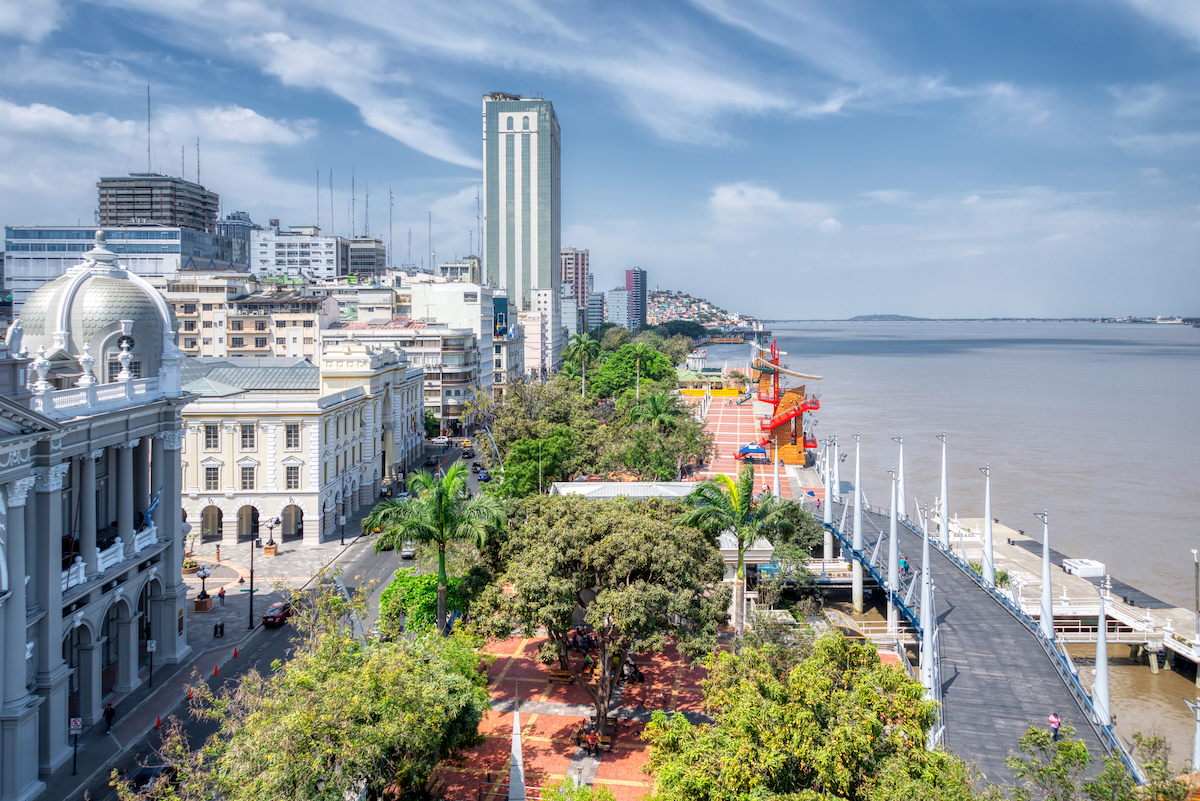
Straddling the great Guayas River, Guayaquil’s riverfront is more akin to any seafront you would find in a coastal city. Guayaquil’s Malecón 2000 is a long riverfront boardwalk and one of the most enjoyable spots to explore in the city.
With the flowing river on one side, the Malecón 2000 boardwalk is home to a collection of restaurants, shops, monuments and various recreational sports on the other. Spending a couple of hours meandering along the boardwalk is a fantastic way to soak up the atmosphere of the city.
Malecon 2000 is divided into different sections, each one colour-coded and offering something a little different at every step. The food court is divided into a fast-food establishment and the Resaca restaurant bar. There is also the exercise area; a place where many locals and visitors meet for a jog along the riverfront as well as a spot for aerobics and outdoor exercises.
With so much to see and do, it is no surprise that the Malecon 2000 has become one of the city’s most popular attractions and the centre of tourist and economic revival in Guayaquil. Even if you decide not to enter the numerous establishments along the riverfront, a simple meander along its promenade is a few hours well spent.
Know before you go:
- Location – The Malecon 2000 is located on Avenida Simón Bolívar, at the foot of the Guayas River.
- Cost – Free to walk down.
- Opening hours – 8 am – 8 pm.
- Time needed – At least two hours to take the whole riverfront in and stop at a few attractions.
- Getting there – Take the bus to the Central Market, which is a couple of minutes walk from Malecon 2000.
5. Ride La Perla
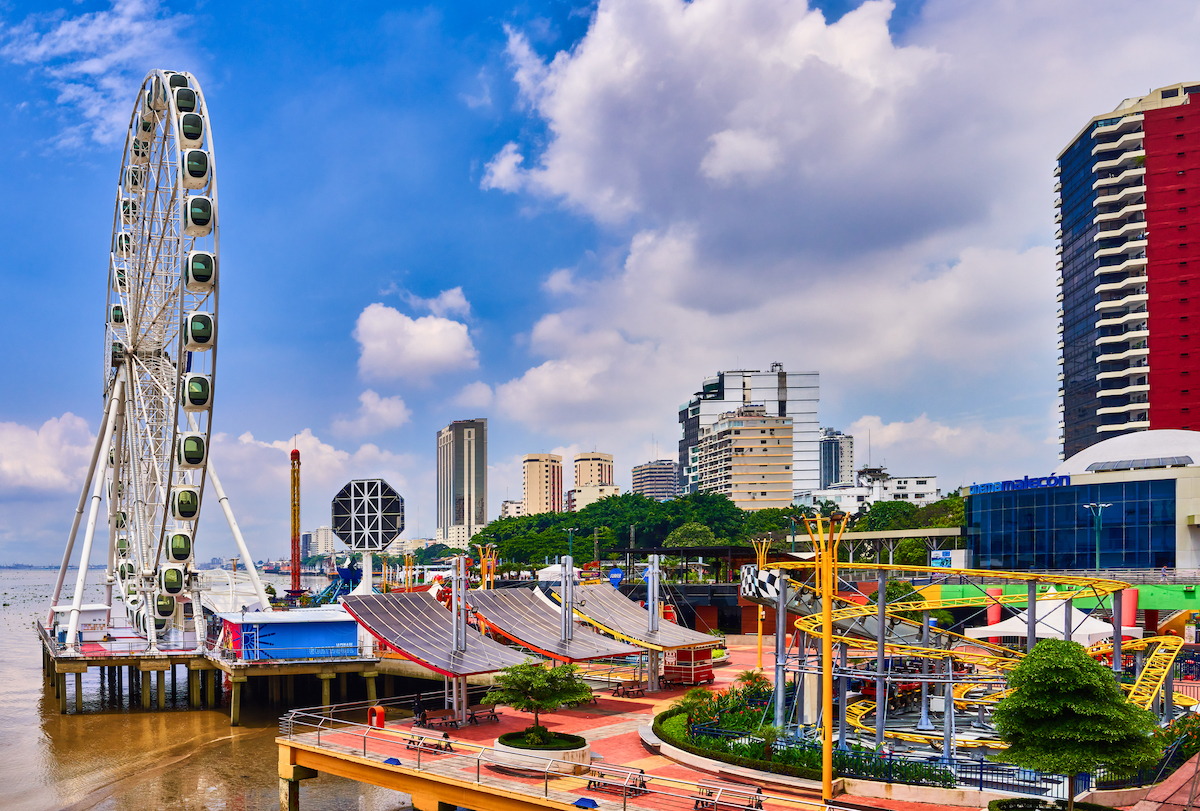
Many of us may be well aware of huge Ferris wheels such as the London Eye, Singapore Flyer and the High Roller in Las Vegas. One that is less well known is La Perla in Guayaquil, which was the largest Ferris wheel in all of South America until Brazil recently dethroned it.
Known as The Pearl in English, La Perla stands at 56 meters and has a diameter of 27 metres, making it a formidable Ferris wheel by any standards.
Taking a ride on the La Perla Ferris wheel is not only a lively experience to share with the locals; it also provides stunning and unparalleled views of the city and the winding river below.
Turning at a mere 10km an hour, the slow-moving Ferris wheel gives you plenty of time to take in the breathtaking views.
Lasting around 12 minutes, you can ride the wheel during the day to see far into the city distance, or during the evening when the wheel and city are both lit up – providing a dazzling and colourful view of Guayaquil and beyond.
Know before you go:
- Location – La Perla is located at the very north of Malecón Simón Bolívar, along the riverbanks.
- Cost – $3.50 Tuesday to Friday and $5 on the weekends.
- Opening hours – Tuesday to Sunday 10 am to 10 pm.
- Time needed – Give yourself around half an hour to queue and ride the Ferris wheel.
- Getting there – The wheel stands just opposite the E04 Cuatro Mosqueteros bus stop.
6. Parque Centenario
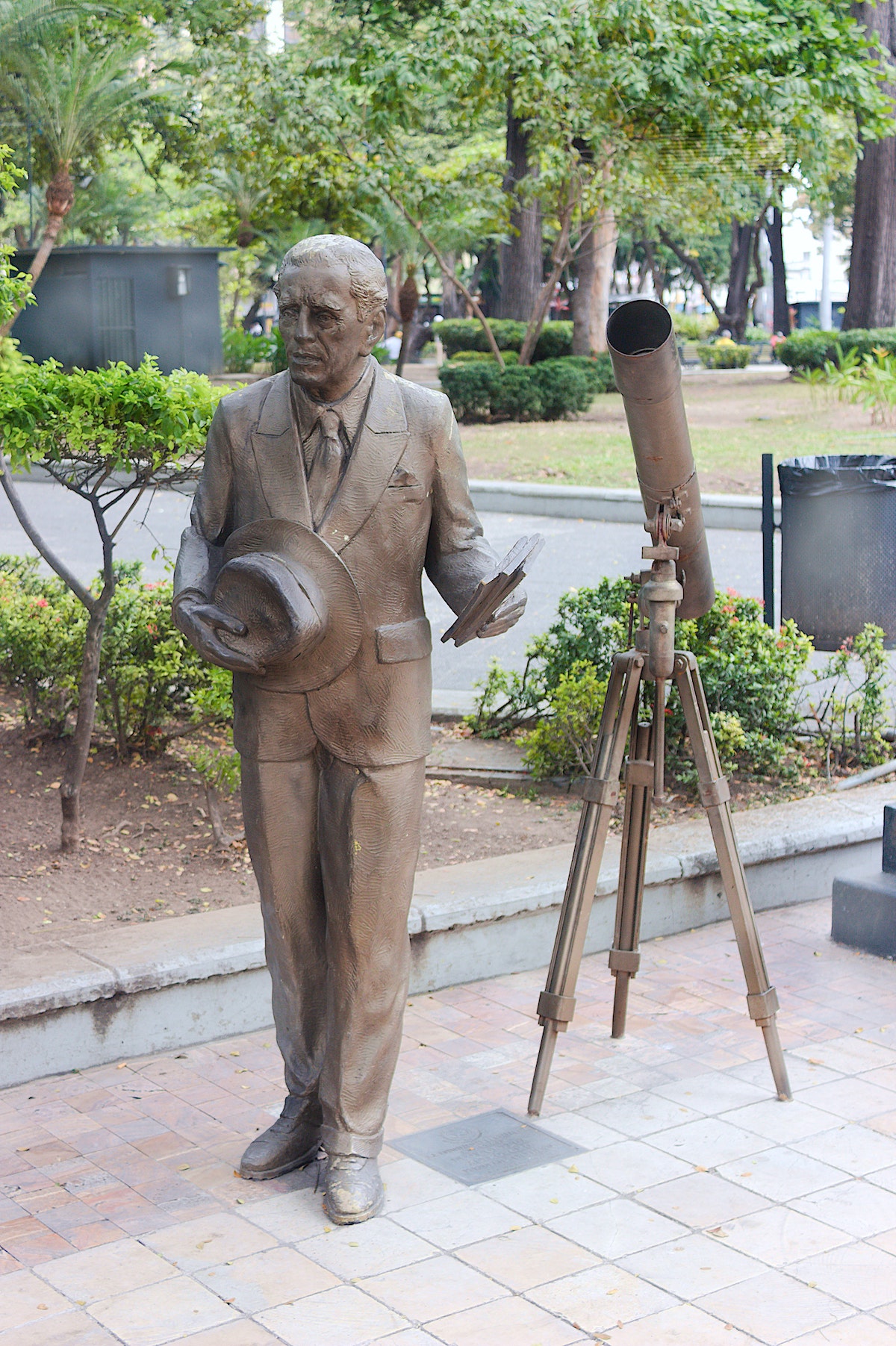
Another of the city’s most popular green spaces is Parque Centenario or, in English, Centennial Park. Covering around 49 acres, it is one of the largest parks in the entire city and is home to a green space full of plants, flowers, pathways, and park benches.
First opened in 1920, the park was dedicated to one hundred years of Guayaquil’s independence from colonial rule, giving it its name, Parque Centenario.
The park centres around a statue and memorial, commemorating the heroes who liberated the city on October 9, 1820. Visiting the Parque Centenario is not only a great thing to do in Guayaquil for its historical value but also for the relaxing nature of the park, making it the perfect escape from the hustle and bustle of a modern city.
Though a green and pleasant space during the day, it’s not wise to be hanging around the park after dark. It, and the surrounding area, are known as being a hotspot for muggings in the city, so be sure to be out before the sunsets.
Know before you go:
- Location – Parque Centenario is located at Av 9 de Octubre, in the centre of the city and between the two rivers.
- Cost – Free.
- Opening hours – 8 am – 7 pm.
- Time needed – Around 40 minutes should be enough to explore and relax in the park.
- Getting there – It’s easy to take a bus to the nearby E01 Parque Centenario bus stop.
7. Check Out The Wildlife at Guayaquil Historical Park

The Guayaquil Historical Park lies upon a peninsula in the Guayas River and was established by the Central Bank of Ecuador to preserve the culture, customs, and history of Guayaquil and the Ecuadorian coast.
Covering an area of twenty acres, this historical park is divided into a number of different sections. These include the Urban Architecture Zone, which preserves historical turn-of-the-century and colonial buildings and the Traditions Zone, which celebrates the cocoa-producing culture in this region of Ecuador.
The third and final area is the wildlife zone, which comprises ten acres dedicated to preserving over 50 species of Ecuadorian animals, many of which are considered endangered.
Those with a love of animals will feel in their element here, with so many species to spot and enjoy. Guayaquil Historical Park is home to species such as parrots, the harpy eagle, toucans, maria and masked ducks. There are also a number of mammals like sloths, ocelots, deer, spider monkeys, tapirs and collared sainos along with reptiles including the crocodile from the coast and spectacled caimans.
With so many different types of animals to see in just one park, a visit to Guayaquil Historical Park is time well spent for anyone wishing to visit the South American continent for its plethora of wildlife.
Know before you go:
- Location – Guayaquil Historical Park is located in the Samborondón area of the city, to its north.
- Cost – $5
- Opening hours – Wednesday to Sunday 10 am – 5 pm.
- Time needed – Set aside a good few hours to get there and explore the park.
- Getting there – As it’s a little outside the city’s centre, with few buses heading this way, catching a quick taxi/Uber to the park is the easiest way to get there.
8. Catedral Metropolitana

The Catedral Metropolitana, known officially as the Cathedral of Saint Peter, was constructed between 1924 and 1937 to replace the former wooden church that stood there from the founding of the city. The vast church is built in the Gothic style and is a breathtaking piece of catholic architecture… oh and it’s merely a hop, skip and a jump from the Iguana Park listed above.
So that’s a two-for-one deal!
On entering the cathedral, the stunning visuals continue, with three large naves complete with awesome stained glass windows and religious iconography. Seeing such a building really brings home to you the part that the Catholic Church has played in the development and remodelling of South American cities such as Guayaquil.
Aside from its historical and cultural significance, the mere sight of the building, its design and its atmosphere make it a fantastic place to visit when looking for things to do in Guayaquil for those who are on the artsier side of the spectrum.
Know before you go:
- Location – Catedral Metropolitana is located in the centre of the city, just to the east of the Parque Seminario.
- Cost – Free.
- Opening hours – 9 am – 7 pm.
- Time needed – A brief half an hour should be enough to explore the church.
- Getting there – Take a public bus to Correos bus stop, a stone’s throw from Catedral Metropolitana.
9. Cerro Blanco Forest
At the very western edges of Guayaquil is the Cerro Blanco Forest, a stretch of six thousand hectares of dry tropical forest and wonder right on the doorstep of the city.
The forest has four guided trails, each with a different length and level of difficulty, perfect for all ages and fitness levels. Aside from seeing the huge biodiversity of plant life and beautiful Ecuadorian landscapes, Cerro Blanco Forest is also home to a huge plethora of wildlife.
While you’re hiking through the Cerro Blanco Forest, you’ll have the chance to catch sight of bird species such as the Guayaquil parrot, the grey-dorsal hawk, the wind-winged pigeon, the saffron goldfinch, and so many more fascinating species.
Aside from birds, Cerro Blanco Forest is home to animals such as the jaguar, ocelot, mantled howler monkey, kinkajou, agouti, collared peccary, and crab-eating raccoon, among other species.
As one of the most accessible protected areas in Ecuador and is located directly off the coastal highway from Guayaquil to Salinas, making it an easy thing to see while based in Guayaquil.
Know before you go:
- Location – Cerro Blanco Forest can be found just under 11 miles west of the city centre, along the highway from Guayaquil to Salinas.
- Cost – $4 entry fee
- Opening hours – 8 am – 4 pm.
- Time needed – It’s best to spend half a day here, time enough to travel and hike around the forest.
- Getting there – Take the bus from the central bus station heading along the Guayaquil-Salinas route ($3). Ask the bus driver to stop at the park entrance.
10. Walk The ZigZag Bridge
As far as unusual things to do in Guayaquil go, this city is no prude. Straddling the estuary river of Estero Salado is what is known in English as the ZigZag Bridge.
Rather than opting for your traditional wooden, suspension or stone bridge, the ZigZag Bridge does as exactly as you would expect from the name and crosses the water in a zigzag shape.
The bridge was first opened on July 1st, 2012, by Guayaquil’s Mayor Jaime Nebot, one of many building projects that were designed and proposed for the urban regeneration of the city. At 220 meters long, this metal pedestrian bridge links the Pier of the University of Guayaquil with the Linear Park in front of the Catholic University.
Walking across the bridge is a fantastic way to spend a few moments in the city. Not only is it the draw of such a unique bridge that makes the walk so enjoyable, but the numerous planters, viewpoints and eight roundabouts that make up the bridge are also great places to take in the views of the surrounding river and city.
Know before you go:
- Location – The bridge is located on Kennedy Avenue, near the Urdesa Bridge.
- Cost – Free.
- Opening hours – 24 hours.
- Time needed – It will only take around 5-10 minutes to cross the bridge and take in the views.
- Getting there – Take a bus to the Fortunato Safadi bus stop to cross the bridge from the south.
11. Bike To Santay Island
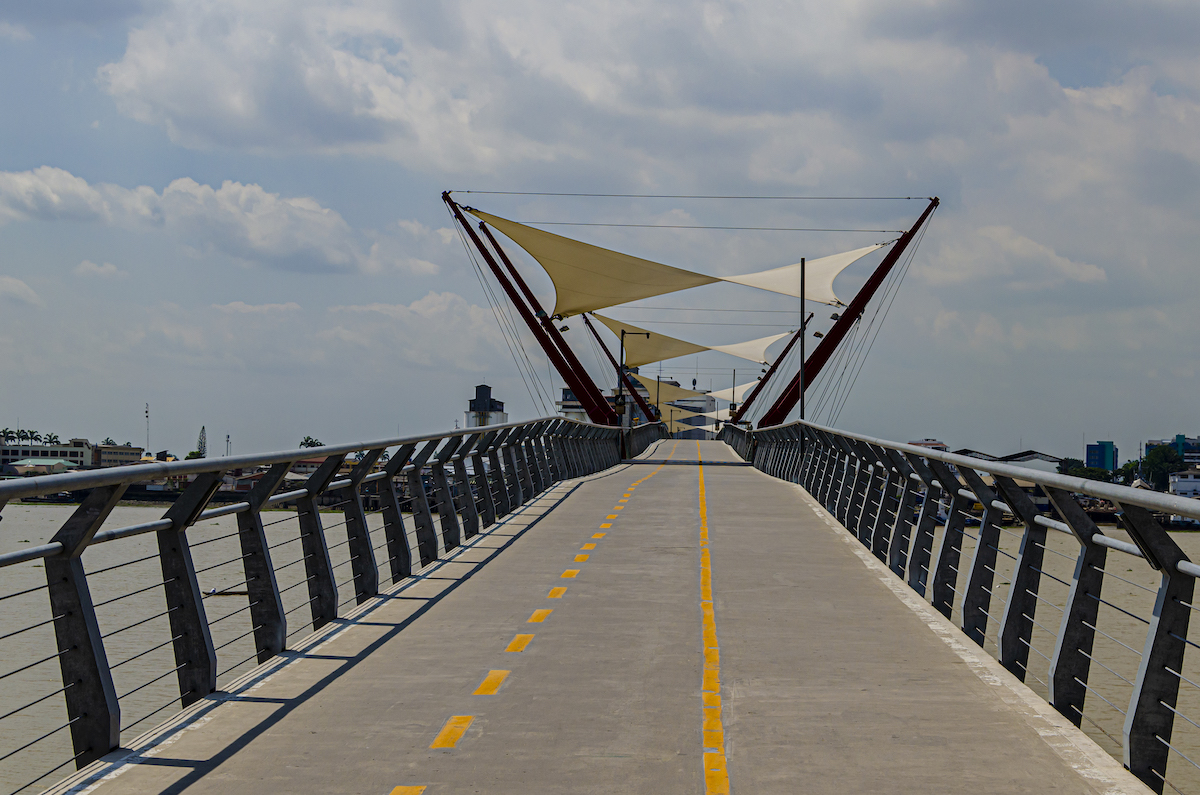
To the southeast of the city, in between the two banks and in the centre of the river, is the blissfully green island of Santay. The five-and-a-half thousand-acre island has been declared a Ramsar site, meaning it is a wetland that is protected from building infrastructure or exploitation under the law.
The island has only been home to a mere 47 families that have lived there since the early 20th century. Aside from the greenery and sparsely populated homes, Santay Island is also home to several species of birds, reptiles and mammals, making it a great place for spotting South American wildlife, so close to the city.
One of the best ways of visiting the island, and keeping the ecovillage-like nature of the island is to cycle there. The Puente Peatonal y Ciclovía Guayaquil swing bridge that connects Santay Island with the city mainland is set aside only for walkers and cyclists, making it the perfect way of getting over the river.
Once there, you can explore all the island has to offer, whether this is simply taking in the sights, spotting a range of wildlife or stopping for a bite to eat at one of the island’s restaurants and street food stalls.
Know before you go:
- Location – Santay Island is located southwest of the city and over the river.
- Cost – Free to explore.
- Opening hours – 24 hours.
- Time needed – It is best to set aside at least half of the day to get the most out of your visit to the island.
- Getting there – Hire a bicycle and cross to the island along the Puente Peatonal y Ciclovía Guayaquil swing bridge at the Armada area of the city.
12. Ride The Pirate Ship
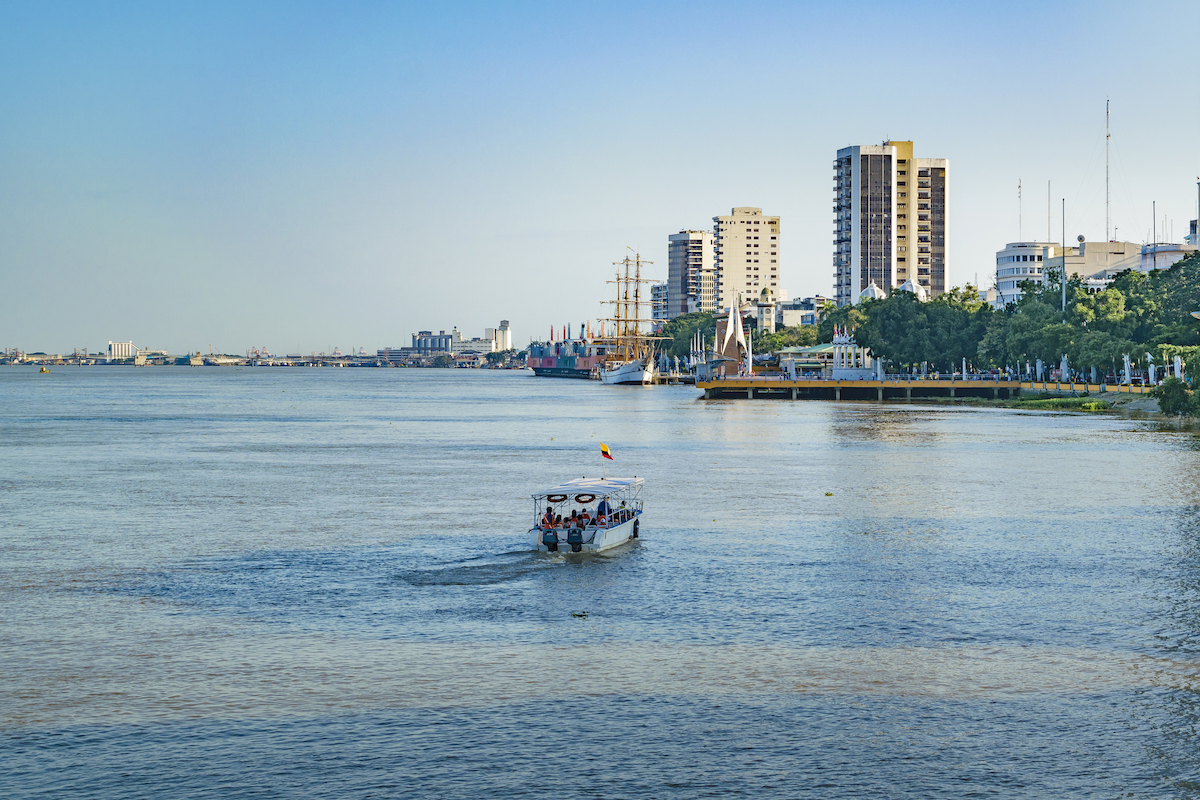
This major Ecuadorian port spent much of its early centuries as a target for pirates and privateers, and linking the city to piracy history makes sense.
Though the pirates are long gone (at least in this part of the world), there is still one way to feel connected to its swashbuckling past, and that is a ride on the Captain Morgan pirate ship.
Named after the 17th-century Welsh pirate Sir Henry Morgan, this replica schooner ship was built in 2003 and was designed to promote the history and culture of historic Guayaquil. Today, the ship carries out touristic and cultural tours through the Guayas River, which gives the passengers a different perspective of the city.
When you join a tour on the Captain Morgan Pirate ship, you can explore the waterways of Guayaquil in a wholly unique way. Harking back over the centuries, you can imagine what it must have been like riding the waves centuries ago.
If this is too gimmicky for your liking, you can opt for a “normal” ship option to sail along the Guayas River.
Know before you go:
- Location – By joining the Captain Morgan Pirate ship tour, you will be collected from your accommodation.
- Cost – $7 per person.
- Opening hours – Tours usually run from around 9 am to 5 pm, sometimes with a lunch break in the middle.
- Time needed – The boat ride and tour will last around two to three hours.
- Getting there – Most tours will collect you directly from your accommodation.
13. See Dolphins in Puerto El Morro
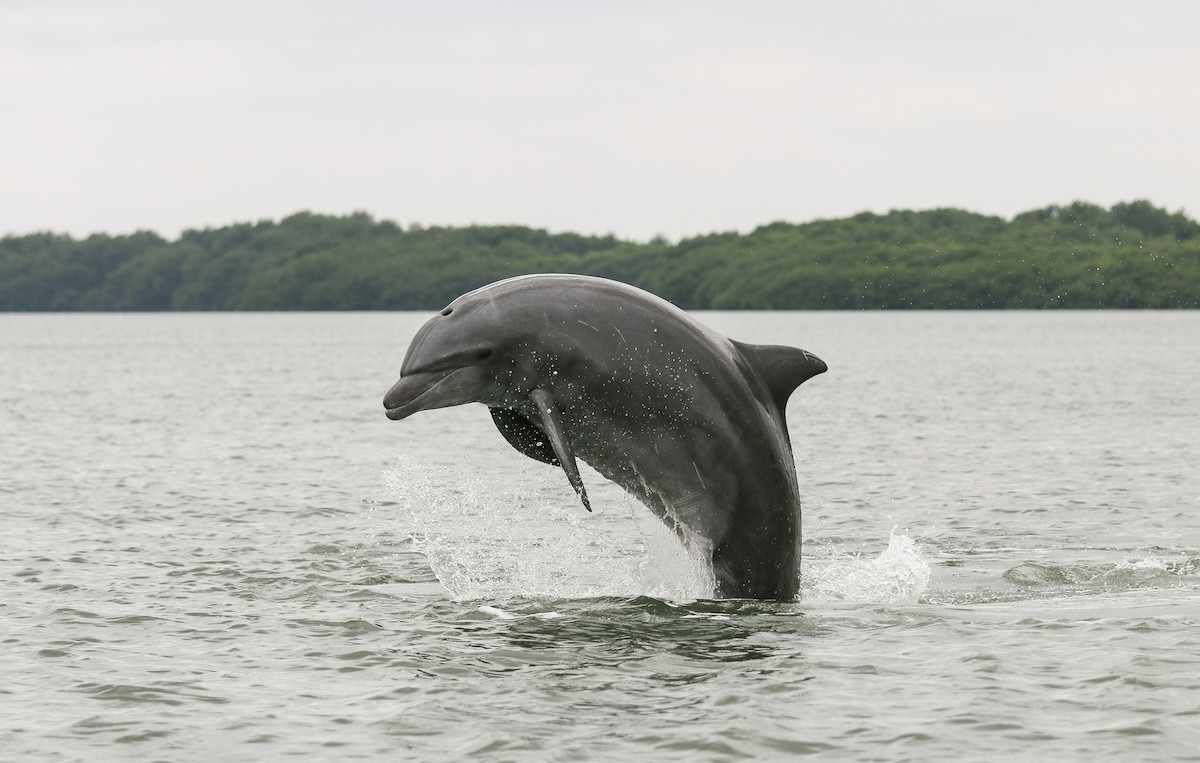
Sixty-five miles southwest of Guayaquil is the small village of Puerto El Morro, surrounded by a quiet mangrove area of wetlands. As well as a whole load of native wildlife, the mangroves are most famous for their pods of bottlenose dolphins, known locally as ‘bufeo,’ aka ‘boto,’ ‘pink river dolphin and ‘Amazon River Dolphin.’
Heading out on a day trip from the city streets of Guayaquil to the blissful wetlands of coastal Ecuador is a fantastic way to escape the hustle and bustle.
Visiting as part of a tour is probably the best way to visit Puerto El Morro and see the dolphins of the mangroves. This unique vantage point from the boat allows you to get up close and personal with dolphins, who are known to swim pretty near to shore and the boats.
A well-known intelligent and curious animal, it is not unheard of for dolphins to swim quite close to the boat and even interact with the passengers, only adding to the magic of the day trip.
Know before you go:
- Location – The mangroves of Puerto El Morro are located 65 miles southwest of Guayaquil.
- Cost – Around $60-$80, depending on the tour operator you use.
- Opening hours – Tours start out at around 8 am and last about six hours.
- Time needed – Set aside a whole day to make the trip and experience the dolphins.
- Getting there – As part of the organised tour, you will be collected and dropped off at your accommodation.
14. Sunset at Salinas Beach
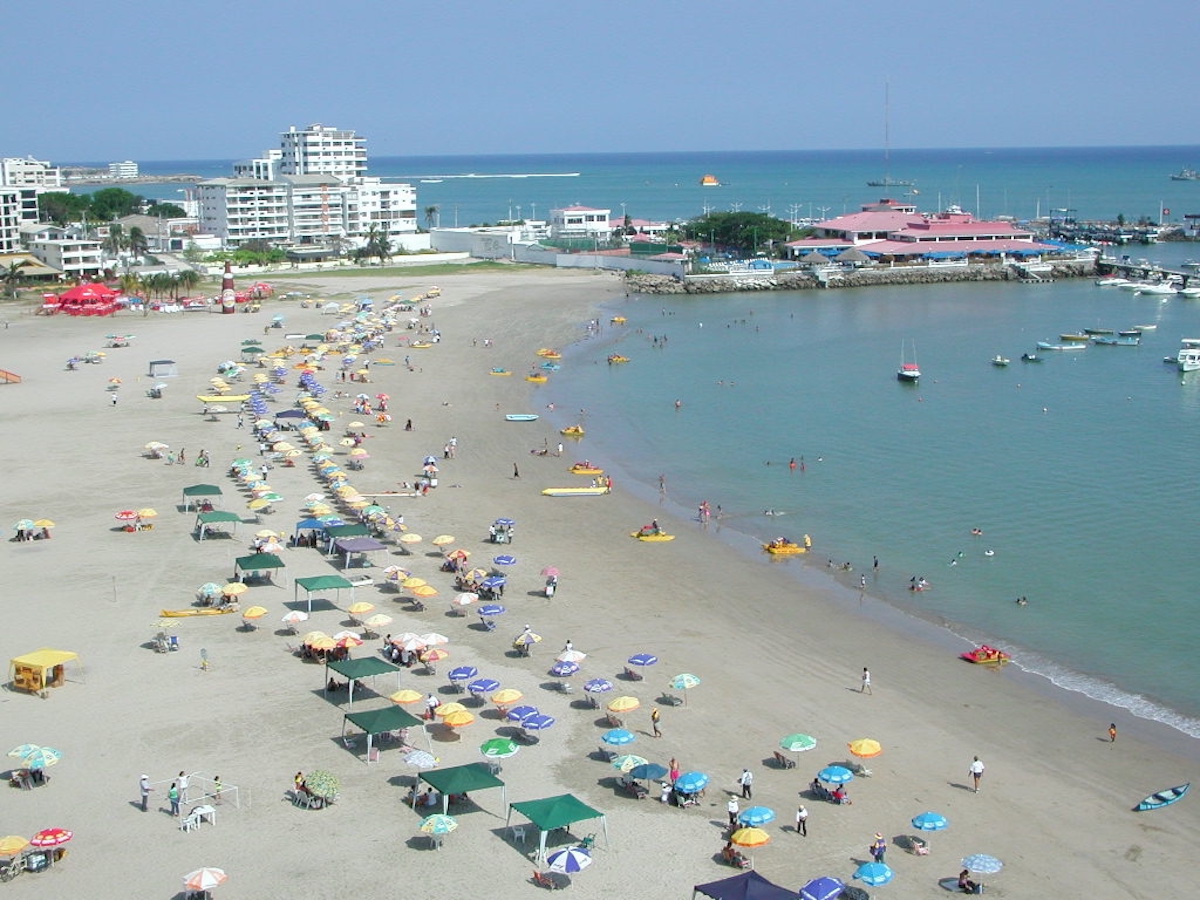
Although a port city close to the coast, the city of Guayaquil is set inland and around estuary banks. That means beach life doesn’t fall at your feet here.
However, a couple of hours’ drive will take you from the city westward and to the sandy coasts of western Ecuador. The one beach that shines out amongst them all is Salinas Beach, jutting out into the blue seas of the Pacific Ocean.
It is no surprise that Salinas Beach and the surrounding town have become the resort town of Ecuador and although this tourist hotspot has built up touristic-centric infrastructure, it has done little to take away the stunning natural beauty of the town and coast.
This beach is perfect for simply lying back and sunbathing on white sands, taking a dip in the blue waters or a gentle walk along the coast. Sitting directly on the western horizon, Salinas Beach is also a fantastic place to watch the sun go down.
Salinas Beach is not only a great place to relax and take in the stunning beach views, but it’s also a fine place to get a glimpse of Ecuador’s coastal wildlife. Keep an eye out for blue-footed boobies and the magnificent frigatebird. Salinas is also home to a tiny parrot, the Pacific parrotlet and is even known for being a spot for migrating Chilean flamingos.
Know before you go:
- Location – Salinas Beach is located 88 miles west of Guayaquil.
- Cost – Buses to the beach will set you back around $3.50 one-way.
- Opening hours – 24 hours.
- Time needed – It’s best to set aside the whole day to get the best out of your day on the beach.
- Getting there – Buses regularly leave Guayaquil’s main bus terminal for Salinas between 3 am and 11 pm every day.
15. Montañita
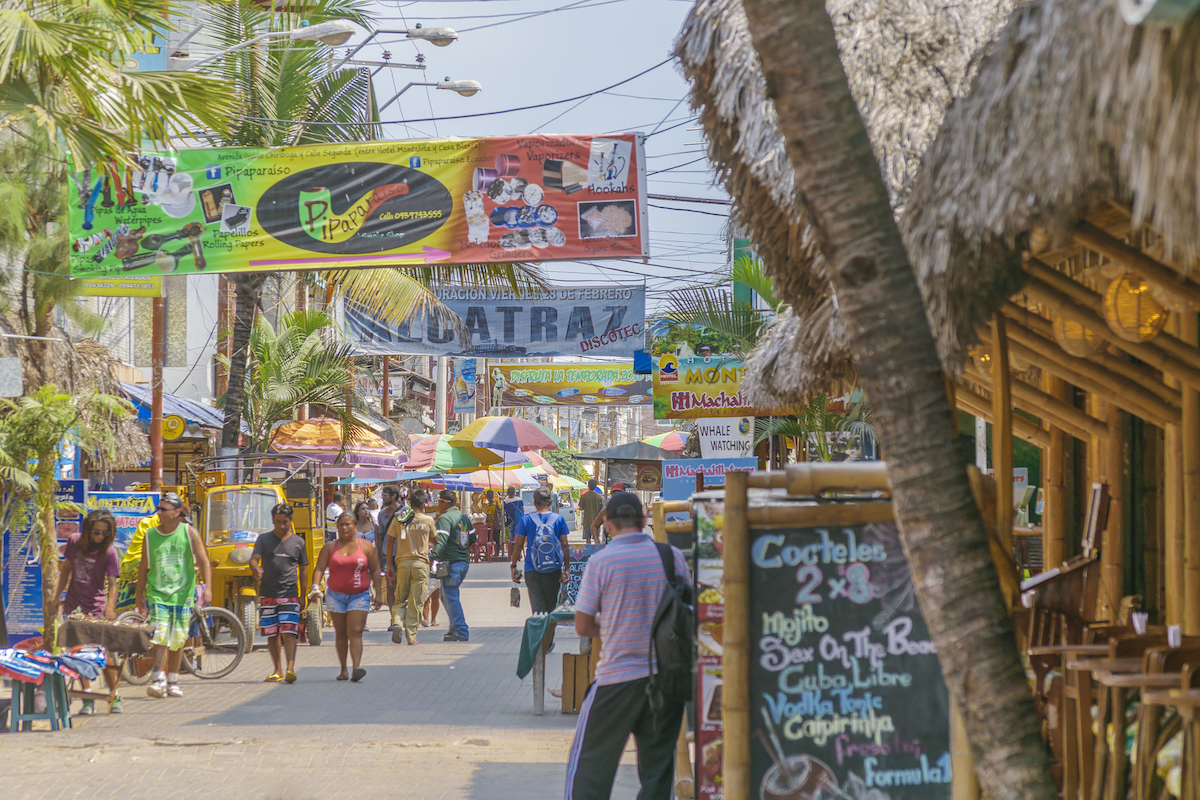
If you are planning to travel around Ecuador there is every bit of chance that you will spend time in Montañita separately, it also features in the aforementioned road trip. However, if you are short on time, you could easily get up early and squeeze it in as a day trip from Guayaquil.
It was surfing that originally put Montañita on the map, drawing in keen surfers from across the globe – and if that’s your thing, be sure to hire a board and catch some waves.
During the weekdays, the laid-back feel of the town, complete with yoga retreats, fruit smoothies and massage therapies, gives the town a real self-help vibe. When the weekend comes, however, Montañita becomes the party capital for both locals and backpackers alike. If that’s not your cup of tea, you have been warned.
Much like travelling in Thailand provides you with Koh Phangan, or living in Cambodia has Sihanoukville, Ecuador has given birth to Montañita as its hippy haven beach party destination.
Know before you go:
- Location – Montañita is located 100 miles northwest of Guayaquil.
- Cost – The bus to Montañita will cost around $6 one-way
- Opening hours – 24 hours.
- Time needed – At least a day, yet for the distance, you may wish to stay for a couple of nights too.
- Getting there – The CLP (Coop Libertad Peninsular) bus company runs a direct, daily service between Guayaquil and Montanita which takes just under three hours.
16. Sail The The Gulf Of Guayaquil
Sitting at the river estuary and perched on the edge of the Pacific Ocean, one of the most peaceful things to do in Guayaquil is to get out on the open water. The Gulf of Guayaquil, the body of water that surrounds the western shores of Ecuador and the northwestern shores of Peru, are some of the most pristine and beautiful in the entire area.
By joining a sailing tour from the port of Guayaquil, you can really experience the Gulf of Guayaquil in all its glory. The boat trip will take you out onto the water, allowing you to experience the blue open water and coastal views that are simply stunning.
Passing out from the city port, you will pass and maybe stop by the lovely little fishing village of Posorja before heading out to the open water. Aside from the quaint villages and beautiful sea views, a Gulf of Guayaquil boat trip will also allow you to get up close and personal with the marine life of Ecuador. This can include bottlenose dolphins and a variety of birds such as blue-footed boobies, pelicans, cormorants, ibises, herons, and egrets.
Know before you go:
- Location – The Gulf of Guayaquil is the body of water that surrounds the port and coasts.
- Cost – You’ll find various quotes for a boat tour, depending on the company and length of the tour. Prices start from around $110.
- Opening hours – 9 am onwards.
- Time needed – You’ll need a full day for the tour.
- Getting there – Tour operators will pick you up from the most centrally located accommodation.
Things To Do In Guayaquil: A Summary
As Ecuador’s second biggest city, things to do in Guayaquil aren’t hard to find if you have that adventurous spark in your eye and you aren’t ready for the confirmation bias of passing it off as yet another port city, or even a boring business hub.
Knowing what I know now would I make a special effort to visit Guayaquil if I wasn’t planning to specifically be in South America?
No, I would not. Because the world is large and cities become brutally dispensable in the neverending quest to itch that travel scratch. However, if you are already in the region, and especially in the country of Ecuador, then yes I do think that Guayaquil is worth visiting.
This South American city will eventually be more travelled, so long as it’s not too shy with its tourism and as long as people give the things to do in Guayaquil a fair crack of the whip.

